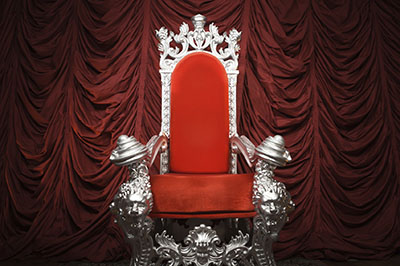The Branded House, The House of Brands and The House Divided
- Many SiriusDecisions clients question whether it’s better to have a strong master brand or a house of brands
- For B2B companies, the master brand strategy is more prevalent and can help unify an organization internally
- When there are multiple competing visions within brand strategy, sometimes this becomes a leadership issue
Many of our clients wrestle with questions of brand architecture. Is it better to have a strong master brand (branded house) or a house of brands (differentiated sub-brands at the product level)? Or is it best to try to achieve a balance between the two? Earlier this year, Marisa Kopec wrote about this in her blog post Branding B2B Offerings.
 In B2B, the master brand strategy is far more prevalent, and for good reason. However, there is one frequently overlooked reason to lean toward a master brand strategy – a master brand helps to unify the organization internally.
In B2B, the master brand strategy is far more prevalent, and for good reason. However, there is one frequently overlooked reason to lean toward a master brand strategy – a master brand helps to unify the organization internally.
I’m a huge fan of Game of Thrones, and recently I was thinking about how each family has a sigil that symbolizes some aspect of their heritage – similar to how a brand represents a company. There’s the direwolf for House Stark, the lion for House Lannister, the dragon for House Targaryen and the flayed man for House Bolton (note to Roose Bolton: fire your branding agency).
But what if each house had multiple symbols? Would armies be inspired to rush into battle under the banner of the lion/horse/marmot/hippopotamus? First, the house would need a very large banner, and there would likely be lots of guys in armor standing around debating the relative magical powers of various beasts. No one would be rushing forward to stab anyone. It wouldn’t make for a very effective army – and certainly not a hit TV show.
This is what is happening in many B2B companies today. With a mob of product sub-brands that have been amassed through acquisitions, organizations are confusing their buyers and their own employees. A strong company brand unites employees around a single mission, but multiple dissimilar brands often divide companies into warring camps.
In many companies with sub-brands, there are also separate organizational structures supporting each brand, and this inevitably leads to an “us vs. them” mentality. Multiple brands also add needless complexity to almost every aspect of the business.
For our clients in the communications function, this pain is particularly acute. It’s challenging enough to craft a coherent B2B message that resonates with buyers authentically – try doing it when you’re starting with 15 different names and logos and taglines! Now add the task of enforcing brand standards for all those brands and managing all those trademarks. Not to mention all of the agencies and systems and processes associated with these brands.
This is more than a brand issue – it’s a leadership issue. Successful leaders unite their employees around a shared vision, not multiple competing visions. The recent ranking of best-liked CEOs from Glassdoor bears this out. The CEOs at the top of the list unify their employees through a clear vision while making the company experience meaningful for employees in different roles.
Sometimes leaders need to make hard decisions – and deciding to end a brand that has existed for many years is one of the toughest. That said, a strong master brand is clearly the winner over the multi-brand approach for internal and external audiences alike.
Now who will win the iron throne? That one is still up for debate.
Let us know how you would characterize your company’s brand strategy – and then post a comment and share your thoughts on brand architecture.